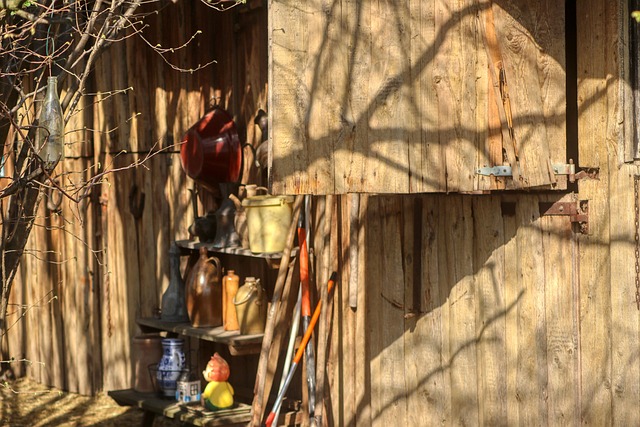Proper Yard Waste Removal and Recycling goes beyond simple disposal. Homeowners can reduce landfill waste and promote environmental conservation by differentiating organic materials like grass clippings, leaves, and wood chips from other trash, composting them, or using them as mulch. Local regulations and programs facilitate responsible removal, with options including dedicated collection, composting piles, and recycling initiatives that transform yard waste into nutrient-rich soil amendments, walking paths, and more. Adopting these practices contributes to a sustainable future by minimizing landfill waste and enriching soil health.
“Simplifying residential yard waste disposal is not just about keeping your property neat; it’s a key step towards sustainable living. This comprehensive guide explores effective strategies for managing yard waste, from understanding what belongs in the dump to eco-friendly tips that reduce environmental impact. We break down the basics of removal, offer recycling options for common materials, and highlight community programs making sustainable yard waste handling more accessible. Discover how easy it is to transform your yard care routine into an eco-conscious practice.”
- Understanding Yard Waste: What Needs Disposal?
- The Basics of Yard Waste Removal: A Step-by-Step Guide
- Recycling Options for Common Yard Materials
- Eco-Friendly Tips for Efficient Yard Waste Management
- Choosing the Right Disposal Method for Your Property
- Community Initiatives and Programs for Sustainable Yard Waste Handling
Understanding Yard Waste: What Needs Disposal?

Yard waste, a term that encompasses a variety of organic materials originating from residential gardens and landscapes, includes items like grass clippings, tree trimmings, hedge shears, leaves, and even small branches. Effective yard waste disposal is not only about ridding your property of these remnants but also plays a crucial role in environmental conservation through recycling and composting practices.
Proper management involves recognizing what constitutes yard waste and differentiating it from other types of trash. Understanding the components that need responsible removal and potential recycling can empower homeowners to make eco-friendly choices. For instance, grass clippings and leaves can be composted, reducing the amount sent to landfills. Similarly, wood chips derived from trimmings can serve as a natural mulch, benefiting garden soil health. By adopting these practices, individuals contribute to Yard Waste Removal while promoting sustainable Recycling solutions in their own backyards.
The Basics of Yard Waste Removal: A Step-by-Step Guide

Yard waste removal doesn’t have to be a daunting task. By understanding the basics, you can streamline the process and contribute to recycling efforts. Start by identifying what constitutes yard waste—this includes grass clippings, leaves, branches, and other organic materials. Next, create a schedule for collection or disposal, ensuring compliance with local regulations regarding frequency and acceptable methods.
A simple step-by-step guide involves: (1) gathering yard waste in designated bags or containers, clearly marking them as such; (2) ensuring proper size and weight to facilitate handling; (3) placing the waste at the curb on collection days, following your municipality’s guidelines; (4) recycling where possible—many areas offer specific programs for composting leaves and grass clippings.
Recycling Options for Common Yard Materials

Many common yard materials can be recycled, reducing waste and benefiting the environment. Grass clippings, for instance, are an excellent source of nitrogen for compost piles, which can then be used to enrich soil health. Leaves can also be composted or turned into mulch, providing a natural insulator for plants during colder months.
Wood chips from pruned branches and trimmings are highly sought after as they make excellent walking paths, garden beds liners, and soil amendments due to their water-retentive properties. Additionally, certain areas offer yard waste removal and recycling programs that collect materials like plastic plant pots, twine, and old gardening tools for proper disposal and repurposing. These options not only simplify yard waste disposal but also contribute to a more sustainable environment.
Eco-Friendly Tips for Efficient Yard Waste Management

In today’s world, where environmental consciousness is on the rise, implementing eco-friendly practices in yard waste management has become more important than ever. A simple shift to Yard Waste Removal and Recycling can significantly reduce your carbon footprint. Start by composting organic materials such as grass clippings, leaves, and food scraps. This process not only cuts down on landfill waste but also creates nutrient-rich compost that can be used to fertilize your garden, promoting a healthier ecosystem right in your backyard.
Additionally, consider the use of reusable containers for yard waste collection. Instead of single-use plastic bags, opt for sturdy, reusable bins or sacks. This simple change can help minimize plastic pollution and contribute to a more sustainable approach to Yard Waste Removal and Recycling. Remember, every small step towards eco-friendly practices makes a significant difference in preserving our planet’s resources for future generations.
Choosing the Right Disposal Method for Your Property

When it comes to residential yard waste disposal, selecting the most suitable method is key to maintaining a clean, eco-friendly space. The first step involves understanding the types of waste generated, such as leaves, grass clippings, or even small branches. Different disposal options are available, each with unique benefits. For instance, composting is an excellent choice for organic materials, reducing waste and creating nutrient-rich soil for gardening. It’s a sustainable practice that not only minimizes landfill usage but also fosters a greener environment.
On the other hand, yard waste removal services offer convenience for those with limited time or space. These professional solutions ensure timely collection and responsible disposal, often including recycling components. For example, many services separate recyclable materials from non-recyclable ones, further contributing to environmental conservation. Choosing between these methods depends on personal preference, available resources, and the property’s specific needs, ultimately leading to a more sustainable and manageable yard waste management system.
Community Initiatives and Programs for Sustainable Yard Waste Handling

Many communities are now embracing sustainable practices, recognizing the environmental impact of yard waste removal. Local initiatives focus on promoting eco-friendly methods to handle organic debris. One popular approach is composting, where residents can transform grass clippings and food scraps into nutrient-rich soil amendments. These programs often provide educational resources, offering guidance on proper collection, storage, and utilization of compostable materials.
Additionally, some areas implement yard waste recycling programs, allowing for the collection and processing of materials like leaves, twigs, and branches. This process reduces the volume of waste sent to landfills and creates opportunities for resource recovery. By participating in these community efforts, residents actively contribute to a greener environment while also potentially lowering their waste disposal costs.
In conclusion, managing residential yard waste doesn’t have to be a complex task. By understanding what constitutes yard waste, following simple removal guidelines, exploring recycling options, and adopting eco-friendly practices, you can efficiently reduce, reuse, and recycle materials from your property. Moreover, staying informed about community initiatives further promotes sustainable yard waste handling. Implement these strategies to simplify disposal, contribute to environmental conservation, and make your home a model of responsible yard management.



